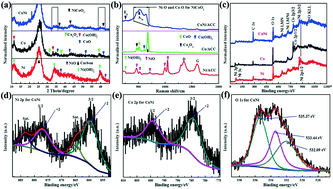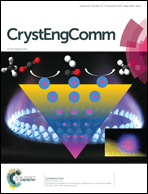Flexible all-solid-state ultrahigh-energy asymmetric supercapacitors based on tailored morphology of NiCoO2/Ni(OH)2/Co(OH)2 electrodes†
Abstract
One of the important requirements of energy storage devices is to store more energy per unit area. In this paper a novel strategy is explored to design and fabricate high-energy supercapacitors by enhancing the areal capacity of electrodes based on the tailored morphology. The morphology of the fabricated samples changed from 3D dense bulk and 2D agglomerated thick sheets to interconnected thin nanosheet networks with ordered nano-holes, and a new phase of NiCoO2 was simultaneously produced. A 3D interconnected NiCoO2/Ni(OH)2/Co(OH)2 nanosheet network was used as an electrode; a high volumetric capacity of 420 C cm−3 was obtained at a current density of 14.7 mA cm−2 and 294 C cm−3 of capacity was retained at a current density of 100 mA cm−2. The reason for the improvement of the electrochemical properties has also been discussed. Besides, an energy density of 37.41 mW h cm−3 and a power density of 155 mW cm−3 in an aqueous asymmetric supercapacitor have been achieved; an energy density of 11.98 mW h cm−3 and a power density of 77 mW cm−3 have also been demonstrated in an all-solid-state asymmetric supercapacitor, with excellent cycling stability and outstanding flexibility. The fabricated all-solid-state supercapacitors were further tested in a heart-shaped logo to supply power for ∼1 hour, indicating the promising applications of these supercapacitors. This strategy provides new opportunities for the fabrication of electrodes and devices with high energy and power density.



 Please wait while we load your content...
Please wait while we load your content...